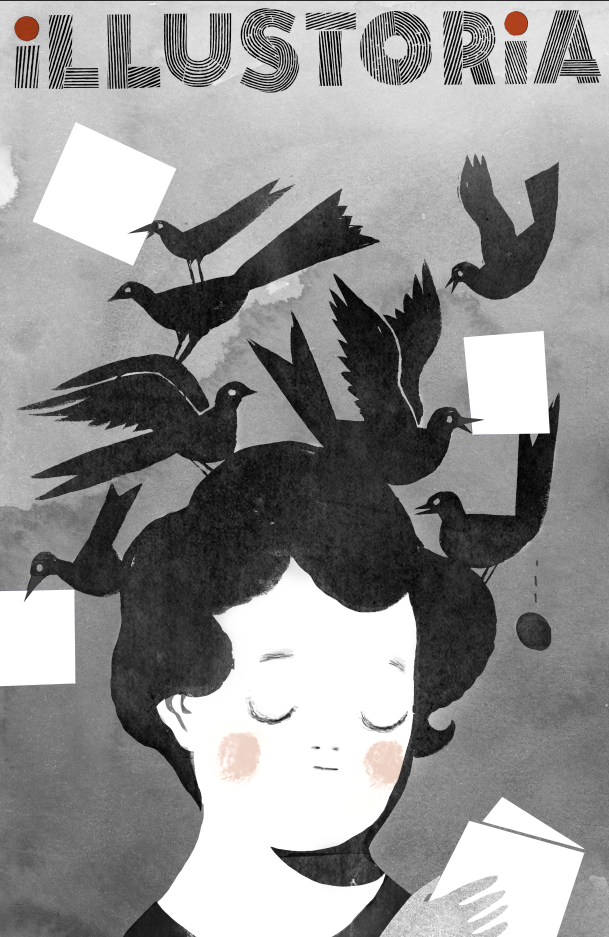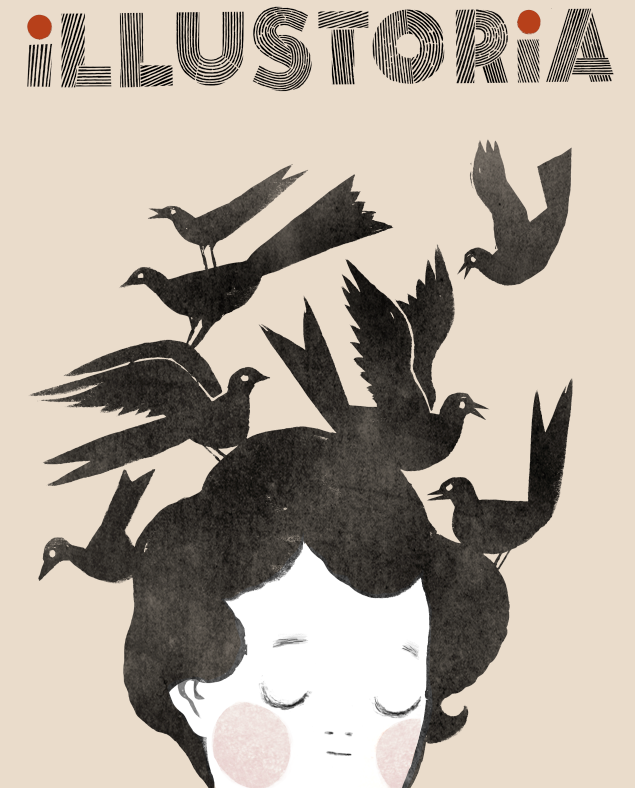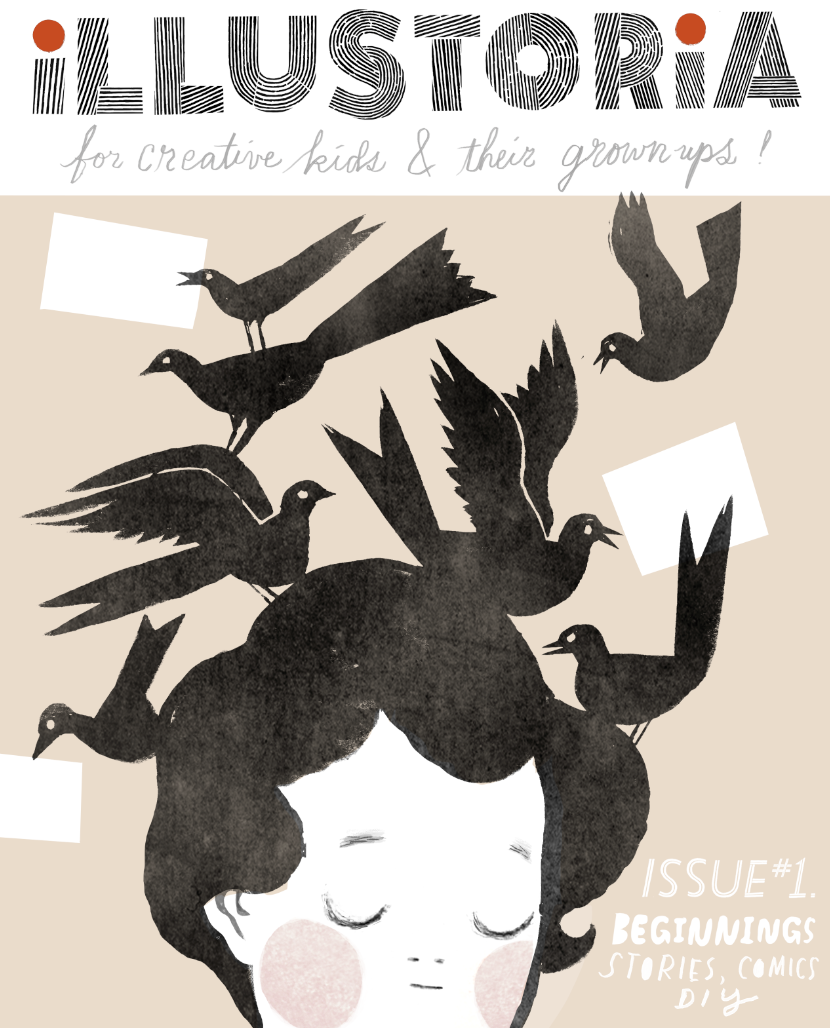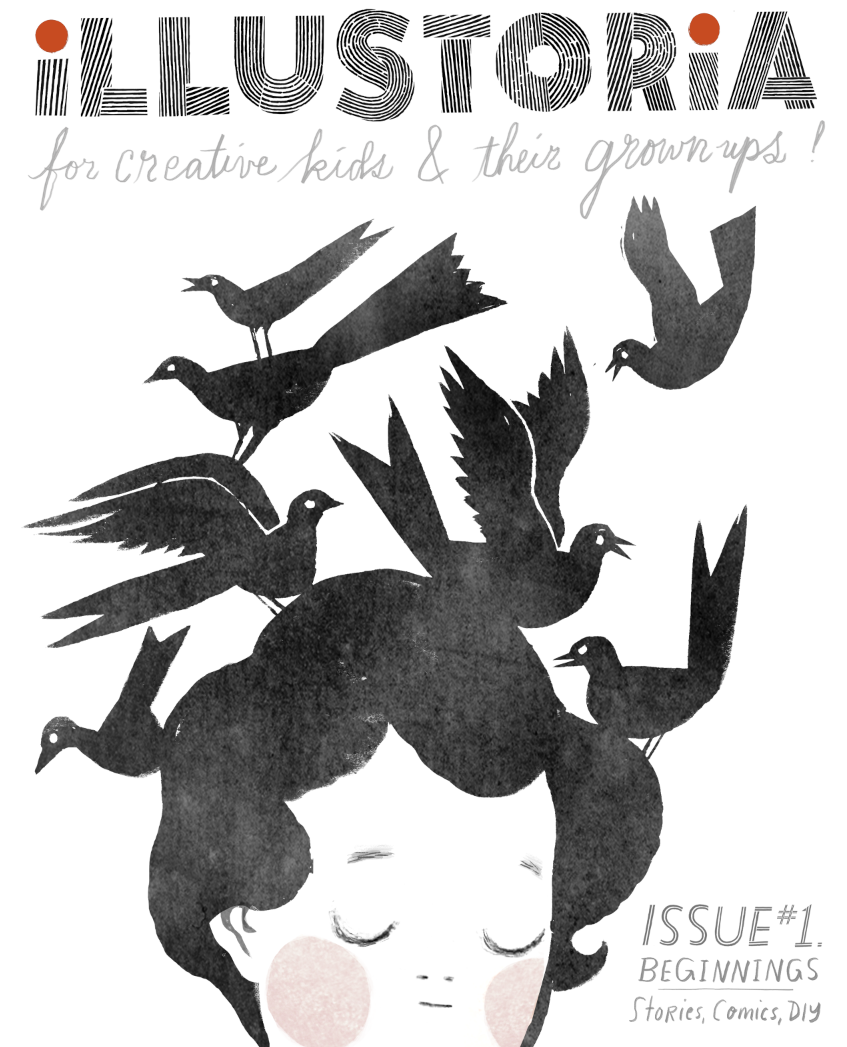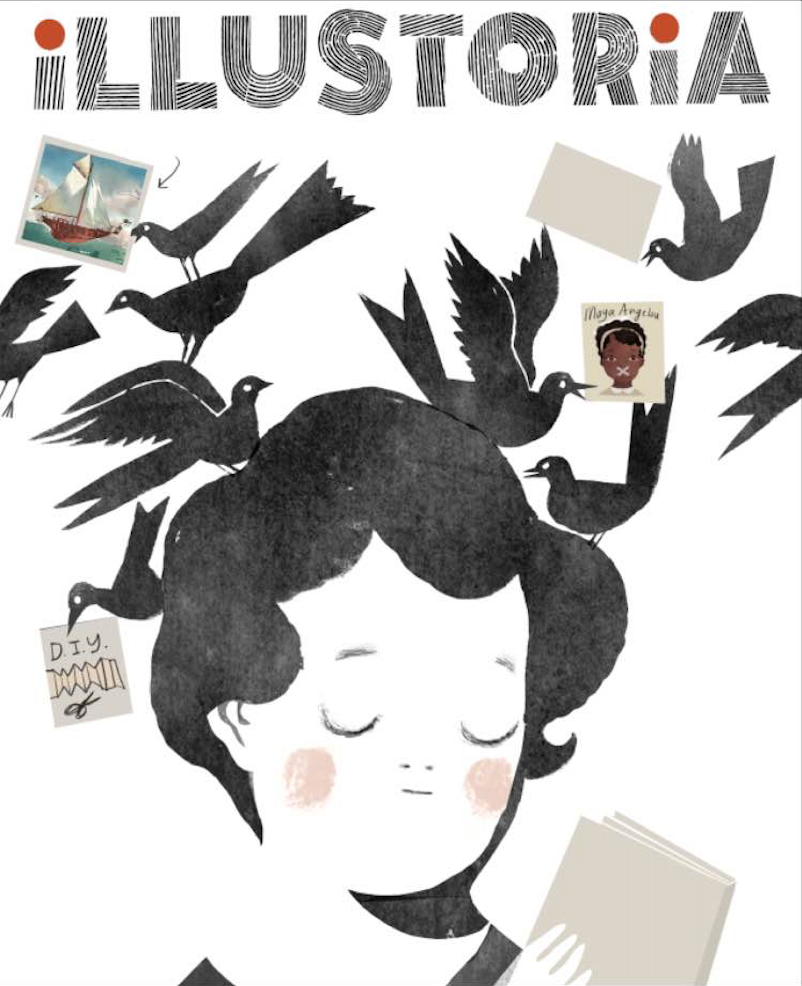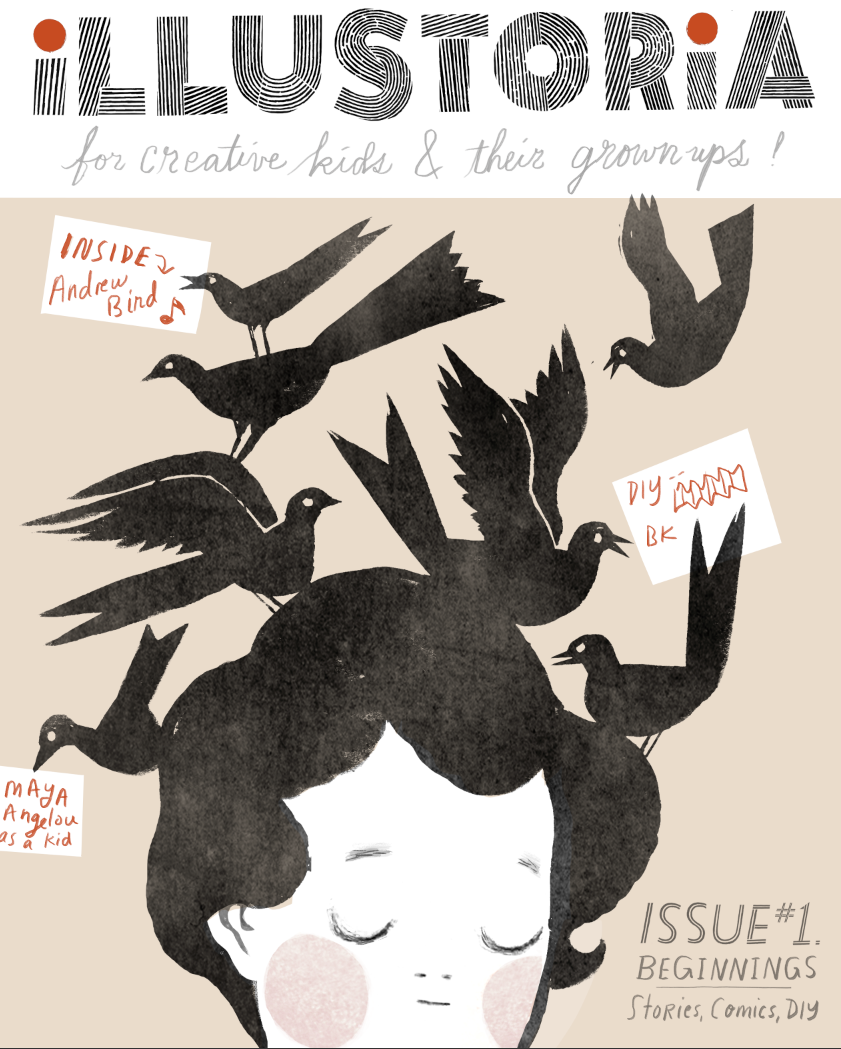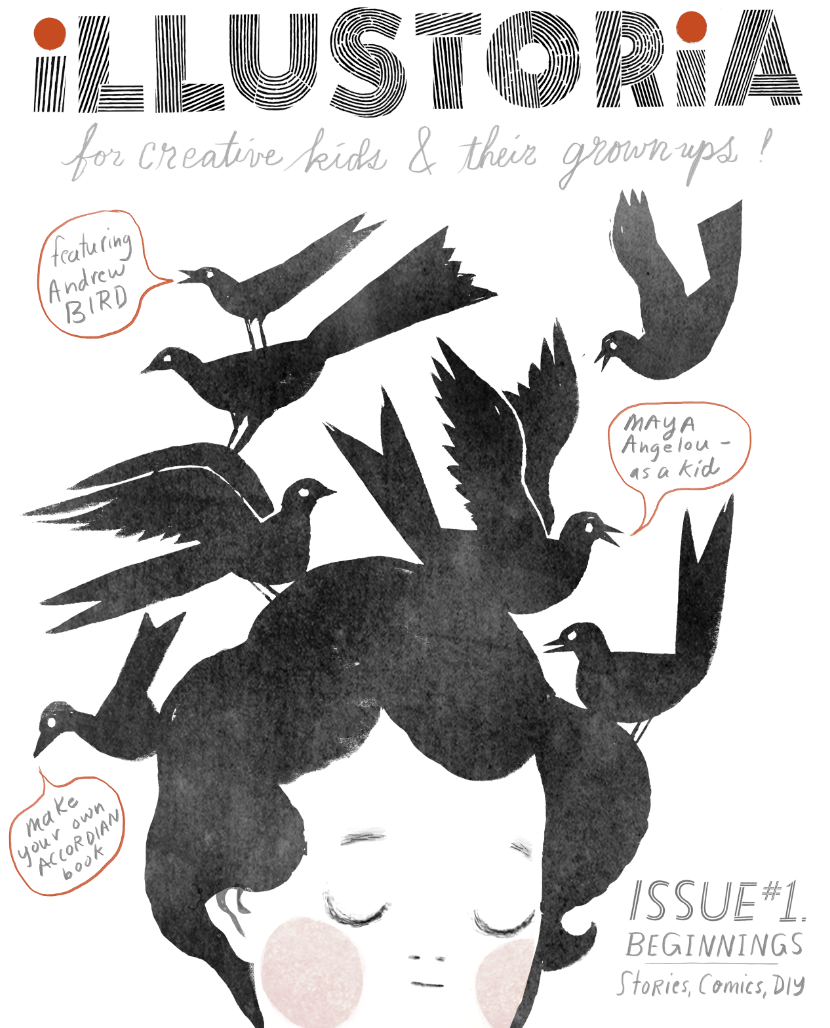Creator Crush: Cece Bell!
When the book EL DEAFO begins, Cece is 4. When it ends, she is about 10 or 11. Cece used these photos to help "age" the bunny version of herself as the book progresses. Photos and art © Cece Bell.
I first heard the adorable name "Cece Bell" spoken of while working as an editor at Lucasfilm. At the time, I was co-editing Tom Angleberger’s Origami Yoda series. I’ll never forget Tom visiting our offices and gifting me an origami R2-D2 that he folded himself. There were many perks of working at Lucasfilm, and receiving an origami Star Wars character by Tom in all his stookiness was most definitely, geekishly one of them. But I had no idea that I would soon meet Tom’s wife, Cece Bell, and be blown away by her own amazing work as a children’s book author and illustrator. I met Cece only briefly at a BEA in New York a couple years ago, where she was signing galleys of her book El Deafo. The booth was crowded with Cece fans and the galleys were quickly disappearing, but I was fortunate to snatch one up.
Illustration © 2014 by Cece Bell; Design by Caitlin Keegan and Chad W. Beckerman. Published by Amulet Books, an imprint of Abrams.
When I returned home to California, I couldn't wait to get El Deafo into the hands of my eight-year-old daughter. As I predicted, she gulped down the book in one sitting—meaning she did come up for air several times to point out some particularly hilarious excerpt from the book. (“Mom—look down your shirt and spell ‘attic’!”) The rest of the time she stayed quietly and contemplatively behind closed doors, unwilling to pull her eyes from the page—just as her mom did (sometimes teary-eyed with sadness sometimes teary-eyed with laughter) on that plane ride back to Oakland. When months later she and I discovered El Deafo in all its full-color, award-winning glory at the bookstore, we were overjoyed by its brilliance. It didn't occur to us that we had been missing anything at all in the uncolored proof.
When Cece's character can't hear anything, the speech balloons are empty. Art © Cece Bell.
El Deafo is a phenomenal graphic novel memoir based on Cece’s childhood experiences with hearing loss and hearing aids. It also chronicles her quest to find true friendship. The graphic novel format is a perfect medium for Cece's story, where pictures and words (in some cases, the lack of words) powerfully demonstrate what her character is experiencing.
The elaborate Phonic Ear hearing aid and microphone set-up had Cece feeling like a superhero with superpowers! But most of the time she just felt like a confused kid. Was she deaf? And what did that mean? Art © Cece Bell.
Read Cece’s firsthand account on the making of El Deafo in our premiere issue and learn about her creative process as an artist and writer. In the meantime, here's an extended version of our Q&A with Cece.
Where did you grow up? Where do you live now?
I grew up in a little city called Salem, in the southwestern part of Virginia. Now I live in an old church just a half-an-hour away, but more in the mountains (and therefore, in the boonies!).
What were you like as a kid?
I was driven to do well and pushed myself hard. I wanted people to think of me as “that smart girl in our class” instead of as “that deaf girl in our class.” I loved making people laugh, especially my older siblings. My sense of humor veered toward the absurdist...and the naughty!
What were some of your favorite childhood books?
Our Animal Friends of Maple Hill Farm by the Provensens
The Meanest Squirrel I Ever Met by Gene Zion and Margaret Bloy Graham
The Snowy Day by Ezra Jack Keats
Ed Emberley’s drawing books
Arnold Lobel's Frog and Toad series
Judy Blume's books
Beverly Cleary's books
The Secret Garden by Frances Hodgson Burnett
The Little House books by Laura Ingalls Wilder
Caddie Woodlawn by Carol Ryrie Brink
When did you know you wanted to be an artist and writer?
I started to figure the art stuff out in college. I had always loved drawing, but never really saw a career in it until I saw other kids making a go of it. As to the writing, no one would hire me to illustrate their children’s books, so I realized I had to write my own books and make my own path.
Who or what inspires you?
My husband, author/illustrator Tom Angleberger, is a huge source of inspiration. He's so encouraging...and he's so good, which triggers my competitive reflexes to be better and to make more stuff.
When do you feel your most creative?
In the morning, when the house is quiet and nothing has happened yet.
Do you have a favorite type of pen, or brush, or paper for drawing with?
I like lots of media and have to admit that I love drawing on my Wacom Cintiq. I love to draw LINES so simple pen-and-ink is a favorite. Gouache! Watercolors! But no oil paints, ick. If I could make a book with illustrations made of felt and colored thread, I'd do it. Love that stuff.
What advice would you share with young aspiring artists?
If you aren't enjoying it, don't do it!
Thank you, Cece, for your words of wisdom and for sharing El Deafo with us!


























